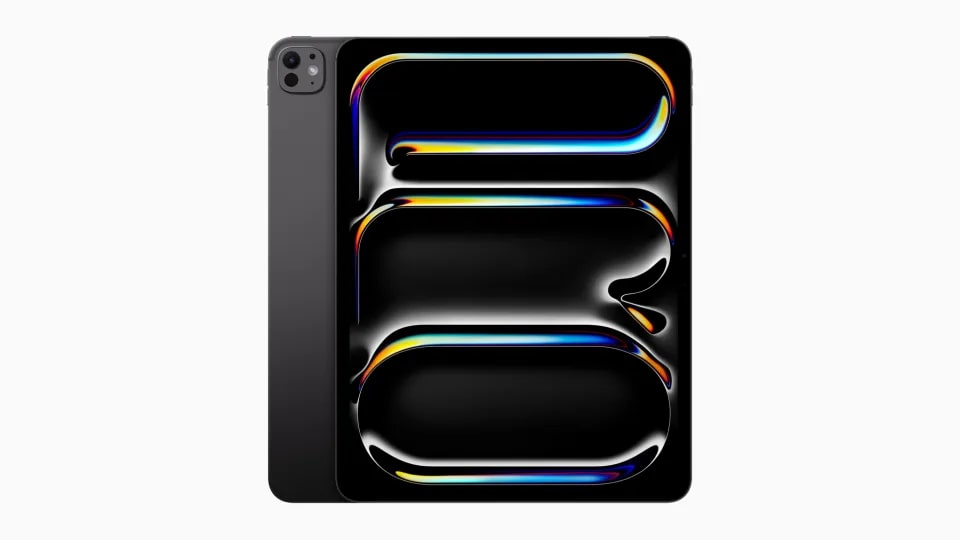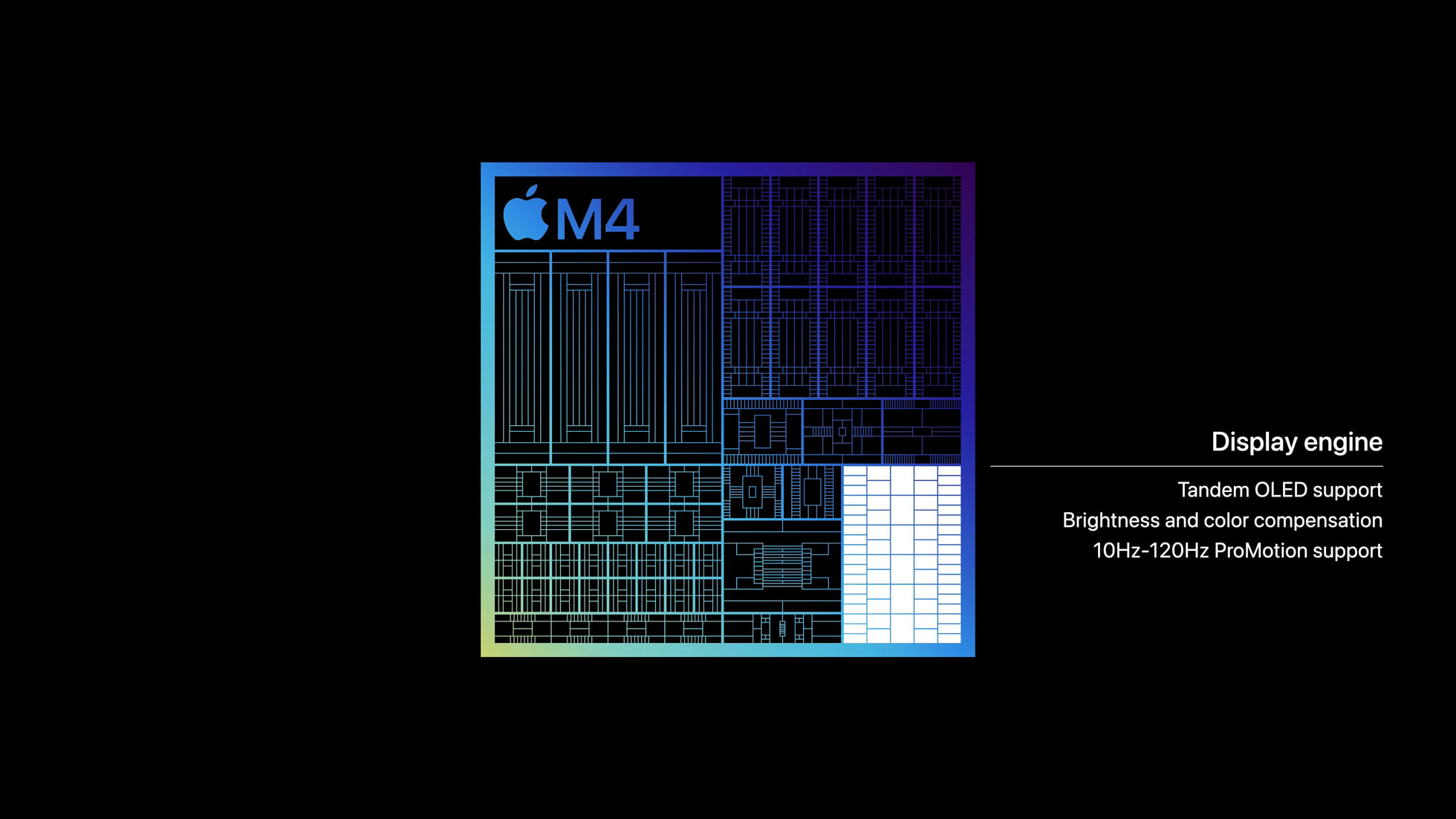After two long years of waiting, we finally got to see the new iPad Pro at Apple’s Let Loose event. This time around, Apple has redesigned the iPad Pro to be much sleeker and equipped it with an immensely powerful M4 chip. However, one thing that got everyone’s attention was the M4 iPad Pro’s Ultra Retina XDR display, which features state-of-the-art tandem OLED technology.

If you’re not a technophile or a geek like me, you might be wondering what ‘tandem OLED’ is. To help you better understand this innovative tech, I have broken down everything you need to know about the M4 iPad Pro’s tandem OLED display.
What is tandem OLED on M4 iPad Pro?
The tandem OLED display is not very different from a traditional OLED display. So, let me first explain how OLEDs work.
Unlike LCD or mini-LED displays, OLED displays don’t require a backlight. Instead, they have a thin film of organic materials deposited on a glass or plastic substrate. When current passes through the substrate, the organic particles glow to light up pixels.

However, as John Ternus (Apple’s VP of hardware engineering) explained in the keynote, “A single OLED panel doesn’t generate enough brightness to deliver the XDR performance iPad Pro users expect.” To mitigate this, Apple created a new display technology that stacks two OLED panels on top of each other.
This new display technology, which simply combines two OLED panels into a single display, is called the tandem OLED display. This display allows the iPad Pro to offer an incredible 1,600 nits of peak HDR brightness and 1,000 nits of peak SDR brightness.
Apple has long wanted to bring OLEDs to iPad Pros, and it has been years in the making. The reason they probably didn’t want to use a standard OLED panel was its low brightness. By stacking two OLED panels, Apple seems to have solved that problem while providing better color accuracy and contrast.
They didn’t stop at tandem OLED; they also announced an optional nano-texture glass to avoid glare and reflections in the 1TB and 2TB variants. So, it’s fair to say that Apple’s primary focus at the Let Loose event was to set industry standards in display tech. But how does it benefit the end user? Let’s take a look.
What are the benefits of tandem OLED display?
Even though there isn’t much difference in how a tandem OLED or a traditional OLED display generates lights, stacking two OLED substrates over each other offers a handful of key benefits. Here’s a quick overview:
1. Significantly higher brightness levels

One of the most notable benefits of tandem OLED displays is that they offer significantly higher brightness levels compared to mini-LED or traditional OLED displays without compromising on battery life.
As mentioned earlier, the dual stack of organic light-emitting diodes offers 1000 nits of full-screen brightness for SDR content or 1600 nits of peak brightness for HDR content.
This is exceptional, as no other tablet in the market currently delivers such an extreme dynamic range. Additionally, it’s a huge leap forward compared to the 2022 M2 iPad Pro’s brightness of just 600 nits.
2. Improved black levels and contrast

OLED displays produce deep, inky blacks as they can individually turn each pixel on or off. If two OLED panels are on top of each other, as in tandem OLED displays, we can expect even better black levels and contrast just because the pixels will be more clearly visible. In the case of the M4 iPad Pro, the tandem OLED display offers an unbelievable contrast ratio of 20,00,000:1.
Become an iGeeksBlog Premium member and access our content ad-free with additional perks.
Moreover, this would also help to reduce blooming or light leakage, which causes fringing around the edges of objects in images and makes things look blurry.
3. Better colors and viewing angles
Tandem OLED displays offer better colors and viewing angles, even in highly reflective environments.
While you may not notice this during day-to-day usage, it can be useful when watching movies or collaborating with others—in any situation where you are not directly in front of the screen.
4. Responsive motion performance
Thanks to Apple’s ProMotion technology, software optimizations in iPadOS, and clever use of smooth animations, the iPad Pro already offers a very responsive experience. However, tandem OLED technology can take it up a notch and offer an even smoother experience when transitioning between frames.
Tandem OLED displays utilize a powerful combination of physics and material science to rapidly transition between on and off states to achieve exceptional sub-millisecond control over the color and luminance of individual pixels. This results in more fluid motion performance and reduced motion blur during fast-moving scenes in movies, games, or when scrolling.
5. Improved lifespan of displays
Thanks to its dual-stack nature, tandem OLED displays can survive up to four times longer than traditional OLED displays. This ensures you can keep using your M4 iPad Pro for almost a decade without facing any internal issues related to OLED displays.
Tandem OLED displays are manufactured by depositing a thin layer of organic materials on two glass substrates that share the electrical load. In traditional OLED displays, the entire electrical load is concentrated on a single organic layer, causing it to wear off quickly and develop discoloration and burn-in.
OLED vs tandem OLED: What’s better?
Given the apparent benefits of tandem OLED displays, it is safe to say that they are significantly better than traditional OLED displays.
Tandem OLED not only offers vibrant colors and excellent black levels, but it also offers significantly higher brightness levels and better longevity than traditional OLED displays.
The only downside of using tandem OLED displays is that they are still more costlier to produce than traditional OLED displays. The added manufacturing cost could eventually trickle down to the pricing of the product in some cases.
M4 Chip and tandem OLED: A powerful combination
Of course, the tandem OLED panel used by iPad Pro’s Ultra Retina XDR display itself is exceptional in several aspects. However, Apple’s new M4 chip pushes its capabilities even further, making them quite a powerful combination.

Unlike the previous generations of Apple silicon chips, the M4 chip features an entirely new display engine that helps the produce even more precise color and offers sustained brightness.
This, paired with the black levels and contrast offered by tandem OLED technology, ensures that the new iPad Pro is more than capable of supporting tasks that rely on well-calibrated, color-correct displays.

The M4 chip also features a brand-new 10-core GPU that builds upon the GPU architecture debuted with M3. This means that the iPad Pro supports several hardware-accelerated features like ray tracing and mesh shading, which, when paired with an Ultra Retina XDR tandem OLED display, ensure stunning visuals.
Video: What is tandem OLED on iPad Pro M4
Wrapping up…
Tandem OLED is a groundbreaking display technology that takes the M4 iPad Pro’s viewing experience to new echelons. With its dual OLED panel design, it offers exceptional brightness levels, unparalleled contrast, and vibrant colors. Furthermore, we can now expect tandem OLED displays to make their way to other Apple devices, such as MacBook.
What do you think about tandem OLED displays? Would you like to see this technology on iPhones? Let me know in the comments section.
Also read:
